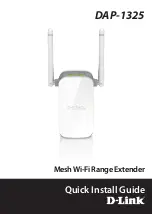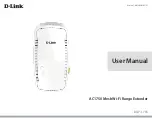
Chapter 6: Interoperability
Routers and Switches
Be aware that during DS3/E3 loopback testing, “sophisticated” routers and switches will often disable a
LAN port if data being sent appears similar to data or MAC addresses being received. This can cause
confusion.
Chapter 7: Telecom Connections
Framing and Physical Link
The converter can transmit the LAN data over a variety of E3, T3/DS3 links (with the appropriate media
converter) such as fiber optic, microwave radio, laser, copper, satellite, or a combination. The converter
may be used with a standard (i.e., M13, M23, clear-channel, C-Bit or G.751) framed or unframed, E3 or
T3/DS3 link with AMI and HDB3 or B3ZS encoding. The link must be unchannelized, i.e., not subdivided
into T1/E1 channels. C-Bit framing is recommended for DS3 links. Newer firmware supports PMDL
Circuit ID on C-Bit links.
Each converter generates the timing clock of its transmitted bit-stream, within E3 and T3/DS3 standards,
either locally, or locked to either port's received bit-rate. The incoming clock rates are displayed at the
unit's HTTP management page.
Telecom Cabling
For the E3 or T3/DS3 connection, two 75-ohm coaxial cables (one transmit and one receive) with BNC
connectors are required at each end. It is important that 75-ohm cable be used and not 50-ohm cable. For
long connections or in electrically noisy environments it may be important to use a high-quality 75-ohm
cable which will have more consistent shielding and conduction. The maximum length of each cable shall
be 440 meters for E3 or 300 meters for T3/DS3, but the acceptable cable lengths of equipment attached to
the converter must be met as well. For lengths over 135 meters, testing in field should be used to determine
whether bit error rates are acceptable. Long cable lengths also require careful selection of cable type and
attention to sources of external noise.
Third-party fiber to copper media converters can be used with the E3Switch converter to implement fiber-
optic DS3/E3 links; however, refer to the interoperability section of this document for vendors to avoid.
Chapter 8: LAN Connections and Performance
LAN Ports
Each LAN port implements the following features to maximize LAN compatibility and link utilization and
minimize packet loss:
•
Autosense/Autoconfiguration/Autonegotiation with the attached LAN.
•
100Mbit/sec data rates (1000Mbit/s if SFP or GbE upgrade purchased).
•
Full-duplex LAN connection.
•
Data buffering.
•
Upstream pause-frame flow-control messaging.
•
Quality of service high-priority queuing.
•
1650-byte packet acceptance (1350 for mgmt and 9600 for jumbo).
These features and their ramifications are discussed below in more detail.
Autonegotiation
The network equipment attached to the LAN port of the converter should be set for autonegotiation
mode in order to allow the converter to negotiate a 100Mbit full-duplex connection.
18













































